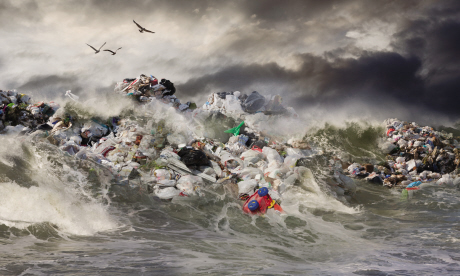
Author of new book '100 places you will never visit' Daniel Smith reveals ten more places you won't get to stop by...
Location: Assumed to be in the Khentii Province of eastern Mongolia
Nearest population hub: Ulaanbaatar
Secrecy overview: Location uncertain: last resting place of the legendary Mongol leader
Given the name Temujin at birth, Genghis Khan went on to unite disparate nomadic tribes to establish the Mongol Empire, winning himself a reputation as one of history’s most feared warriors in the process. In accordance with his wishes, he was buried in the utmost secrecy: the location of his tomb remains one of history’s enduring conundrums, despite numerous attempts to find it.
The slaves who built the tomb were murdered once it was completed so that they could not divulge its location, and the soldiers who killed them were in turn dispatched. It is said that the ground was then trampled by horses, planted with trees and even had a river diverted over it to hide the tomb entrance.
Debate rages as to the location of the emperor’s body. Many believe that it is probably in Mongolia’s Khentii Province, perhaps close to the sacred Burkhan Kaldun mountain where Temujin was born. In 2004, an archaeological team claimed to have found his long-lost palace in this region, which many experts assume would have been close to his final resting place. Yet the grave remains elusive and that is no doubt what Genghis Khan would want. According to Mongolian tradition, as long as his tomb is left undisturbed his soul will be kept protected.
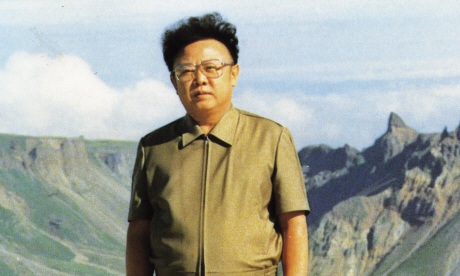 2. Mount Baekdu hideout
2. Mount Baekdu hideoutLocation: Ryanggang Province, North Korea
Nearest population hub: Hyesan
Secrecy overview: Existence unacknowledged: secret mountain lair of the former North Korean leader, Kim Jong-il
Kim Jong-il, reputedly a great fan of the James Bond movies, all but completed his transformation into the perfect Bond villain by ordering construction of a secret military command centre inside his country’s most sacred mountain, Mount Baekdu. Uncovered by foreign defence analysts in 2010, the complex is believed to have been for many years in the building.
Mount Baekdu (which translates as ‘the white-headed mountain’) rises to over 2,700 metres (8,850ft) on North Korea’s border with China. It is a spectacular statovolcano with a habit of erupting about once a century on average (the next eruption is currently overdue).
The secret base was revealed by the Hong Kong bureau of the Kanwa Information Centre in 2010. Built close to one of the ‘Dear Leader’ Kim Jong-il’s palaces, the complex has storage space for helicopters and fighter jets, with an airfield located conveniently close by. Evidence for the lair’s existence was garnered from a combination of satellite photos and the testimony of defectors.
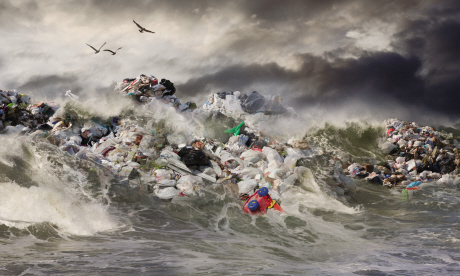 3. The great Pacific garbage patch
3. The great Pacific garbage patchLocation: North Pacific Ocean
Nearest population hub: Honolulu, Hawaii, USA
Secrecy overview: Jurisdiction uncertain: the world’s biggest rubbish dump
Twice the size of Texas, a mass of non-biodegradable plastic has gathered in the waters of the northern Pacific Ocean. Brought together by ocean currents, this vast body of waste originates from countries all around the world and poses a major long-term threat to the ecosystem. Yet no nation state or major international body has formulated a comprehensive plan for dealing with it.
The responsibility of no single nation, the great Pacific garbage patch is a truly dirty secret that few outside the community of environmental activists are ready to acknowledge and act upon.
The patch has formed from countless tonnes of rubbish deposited into the sea, 80% of it from mainland areas.
 4. Air Force One
4. Air Force OneLocation: Stationed at Joint Base Andrews, Maryland, USA
Nearest population hub: Washington, DC
Secrecy overview: High-security location: the US President’s personal aircraft
Strictly speaking, Air Force One is not an aircraft but merely the call-sign of any Air Force jet in which the President happens to be flying. In practice, however, it normally refers to either one of two Boeing 747-200 series jets (with tail numbers 28000 and 29000) that are at the President’s disposal.
The plane’s facilities are split over three levels, providing over 370 square metres (4,000 sq ft) of floor space. With room for around 70 passengers on board, the guest list tends to be pretty exclusive, and anyone going aboard can expect to undergo stringent security screenings. Aside from the President, the passenger roster may include members of the President’s family and other specially invited guests. George W Bush, for instance, occasionally took his pet cats and dogs for a spin.
Air Force One is equipped with its own anti-missile defence systems, and has infrared countermeasures situated around the tail and the engines, designed to confuse heat-seeking weapons. There is also shielding to protect the plane’s electronics from an electromagnetic pulse attack.
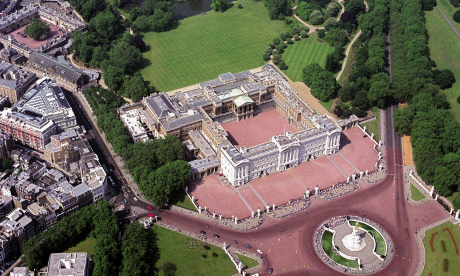 5. The Queen’s bedroom, Buckingham Palace
5. The Queen’s bedroom, Buckingham PalaceLocation: Westminster, London, England
Nearest population hub: London
Secrecy overview: High-security location: the private chamber of the Queen
Buckingham Palace is the British Queen’s official London residence, and one of the most iconic buildings in the world. Yet despite attracting hordes of tourists, large swathes of the labyrinthine palace remain under the highest security and off-limits to the world at large. Most private of all is the Queen’s personal bedroom, once the scene of a notorious break-in.
Today, the Palace encompasses some 775 rooms, of which 52 are royal and guest bedrooms. When in residence (signified by the raising of the Royal Standard), the Queen and Prince Philip occupy a suite of rooms in the Palace’s North Wing. By rights, this should be the single most impenetrable part of the building. But being such a famous landmark, Buckingham Palace has tempted many to test its security over the years, from naked paragliders to undercover journalists, and from paternal rights campaigners dressed as Batman to Osama bin Laden look-alikes.
As well as armed guards throughout the Palace, there are regular police dog patrols and a permanent detachment from the Queen’s Guard, instantly recognizsable in their red tunics and bearskins.
Location: West Flanders, Belgium
Nearest population hub: Ghent
Secrecy overview: Access restricted: home to the First World War’s largest unexploded mine
La Basse Cour (which translates as ‘The Farmyard’) is a 60-hectare (150-acre) privately owned farm close to the town of Ypres. Amid the push-and-pull of the First World War’s Western Front, its location on the Messines Ridge put it on the front line of hostilities. Today the farm sits on a massive 22,500kg (50,000 lb) mine that has yet to detonate.
The Messines Ridge fell under German control in the early months of the First World War, and remained so until 1917. From January 1916, British troops began digging underground tunnels from their lines around the Ypres Salient towards the German encampments at Messines. The idea was to lay a series of mines that could be exploded shortly before a major troop offensive. However, six of the British mines survived the operation intact. Five of them were left undetonated for strategic reasons, while the sixth was lost during a German counter-mining attack and never recovered. It lay beneath a farm then known as Le Petite Douve, which was renamed as La Basse Cour by its owners, the Mahieu family, in the aftermath of the conflict.
And there the mine survives to the present day. While another of the Messines mines exploded spontaneously in 1955 during a lightning storm, the bomb beneath La Basse Cour remains buried some 24 metres (80 ft) beneath the Mahieus’ property.
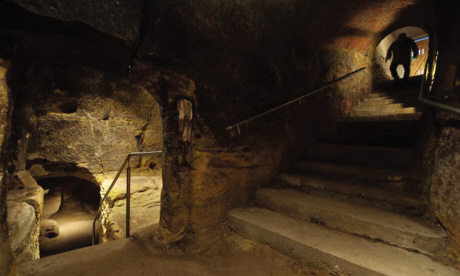 7. Bavarian Erdställe
7. Bavarian ErdställeLocation: Bavaria, Germany
Nearest population hub: Munich
Secrecy overview: Site of historic mystery: an ancient complex of mysterious underground tunnels
Southern Germany is home to a labyrinth of over 700 subterranean passages and chambers, known as Erdställe and believed to date from between the 10th and 13th centuries. Entrances into the network have been found in disparate locations, within churches, graveyards and private houses, as well as among woodland. However, answers to the questions of who built them and why remain as elusive as ever.
Similar underground networks are evident elsewhere in Europe, notably in Austria, Hungary, Ireland and Spain. A priest by the name of Lambert Karner was the first to extensively explore the Bavarian tunnels in the late 19th and early 20th centuries.
The passages vary greatly in size – some are so small that they can only be entered on hands and knees while others are relatively spacious and stretch in excess of 100 metres (330 ft). In Germany, the passages have also traditionally been referred to as ‘goblin holes’ (Schrazelloch), reflecting a once widely held belief that they were supernatural in nature.
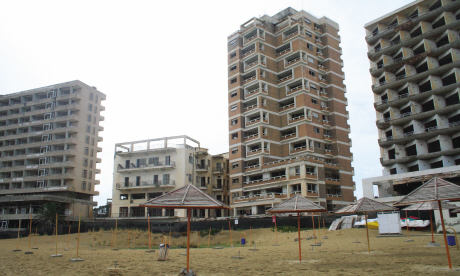 8. Varosha
8. VaroshaLocation: Eastern Cyprus
Nearest population hub: Famagusta, Cyprus
Secrecy overview: Access restricted: a fenced-off ghost town since 1974
In its heyday, the sun-soaked Mediterranean beaches of Varosha made it one of the world’s most popular holiday destinations. Filled with luxurious high-rise hotels, it was beloved by the Hollywood jet set, with visitors ranging from Elizabeth Taylor and Richard Burton to Brigitte Bardot. But in 1974, politics intervened and life as it was known in this tourist playground came to a grinding halt.
The Varosha area is a neighbourhood (if it can now be called that) of Famagusta, a city lying just north of the Atilla Line that today divides Cyprus between the Greek south and the Turkish north.
Varosha now resembles a modern-day Pompeii, capturing a lost moment of time. Breakfasts sit half-eaten on tables beneath light bulbs that burned for years, no one having turned them off. Car dealerships sit silent, their forecourts filled with what were the latest models back in 1974. Similarly, boutiques are stocked with the dubious fashions of the mid-1970s.
Meanwhile, buildings uncared for and unloved for almost four decades, slowly deteriorate as nature inexorably reclaims her territory. The roots of untended plants and trees are gradually undermining the structural safety of once grand edifices, as untreated roads crack under season after season of raging sunshine. Beaches once populated by sun-seekers are now home to colonies of sea turtles.
So it is that a strange situation holds whereby it is possible to tan yourself on the beach in the Turkish-Cypriot resort of Famagusta while Varosha sadly decays next to you, testament to an intractable civil conflict.
Location: Galmadug region, central Somalia
Nearest population hub: Galkayo
Secrecy overview: Access restricted: a pirate-controlled enclave in war-torn Somalia
A small coastal town on Somalia’s east coast, in recent years Hobyo has become synonymous with the endemic piracy problem around the Horn of Africa. As well as being home to a large number of the pirates themselves, it has been used as a dock in which to harbour hijacked vessels. Civil war has rendered the surrounding region lawless, leaving Hobyo essentially off-limits to outsiders.
Situated in Somalia’s semi-autonomous Galmudug region, Hobyo was once capital of a prosperous Sultanate, but went into decline after it came under the jurisdiction of Italian East Africa in 1936. he small town has a scattering of run-down buildings, fighting an everlasting battle against the sands of the receding coastline. Its water supply is compromised, there are no hospitals or schools in operation, agriculture has all but died and tourism is out of the question. For some, piracy seems the only answer (though few locals seem to reap the benefits from the vast revenues it raises). Some estimates suggest the illicit business employs 10% of the population.
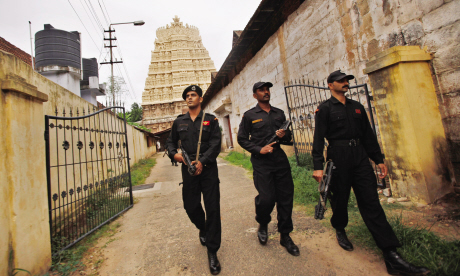 10. Temple Vaults, Sree Padmanabhaswamy
10. Temple Vaults, Sree PadmanabhaswamyLocation: Thiruvananthapuram District, Kerala, India
Nearest population hub: Thiruvananthapuram
Secrecy overview: High-security location: sight of a treasure horde worth billions
Southern India’s Sree Padmanabhaswamy Temple was built in the 18th century. When in 2011 its vaults were opened for the first time in over a century, they were found to contain gold, silver and jewels with an estimated value of over US$15 billion. Perhaps unsurprisingly, a portion of this new-found wealth was immediately spent on improving the temple’s security.
The enormous Thiruvananthapuram temple, dedicated to the Hindu god Lord Vishnu, was built by the rulers of the Travancore kingdom (which joined with Cochin in the 20th century to become modern-day Kerala). Its construction included six large, granite vaults into which offerings to Vishnu were deposited over the course of several hundred years. It is believed that several of the underground chambers had been sealed for at least 130 years.
Some of the vaults offered up more treasure than others, but few had expected the amount and extent of valuables that would be revealed. The trove included solid gold idols, a gold chain said to weigh more than 3kg (6.5 lb), antique diamonds by the handful and even two coconut shells covered in beaten gold and adorned with rubies and emeralds.
 These ten weird and wonderful locations have been taken from 100 Places You Will Never Visit: The World's Most Secret Locations (Quercus, £14.99). Learn more about the world's secret places you don't know about and couldn't visit even if you wanted to. The book is available online – order your copy now.
These ten weird and wonderful locations have been taken from 100 Places You Will Never Visit: The World's Most Secret Locations (Quercus, £14.99). Learn more about the world's secret places you don't know about and couldn't visit even if you wanted to. The book is available online – order your copy now.